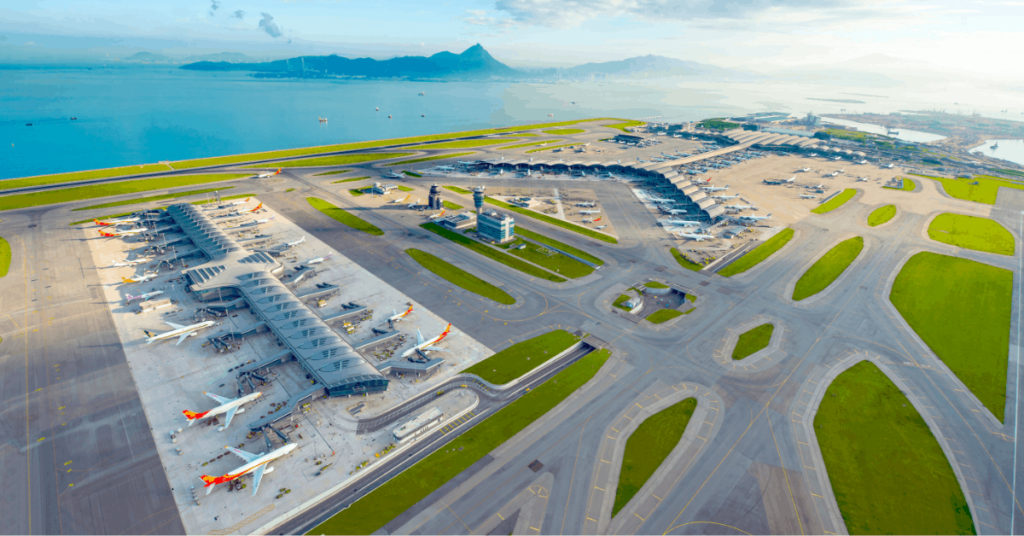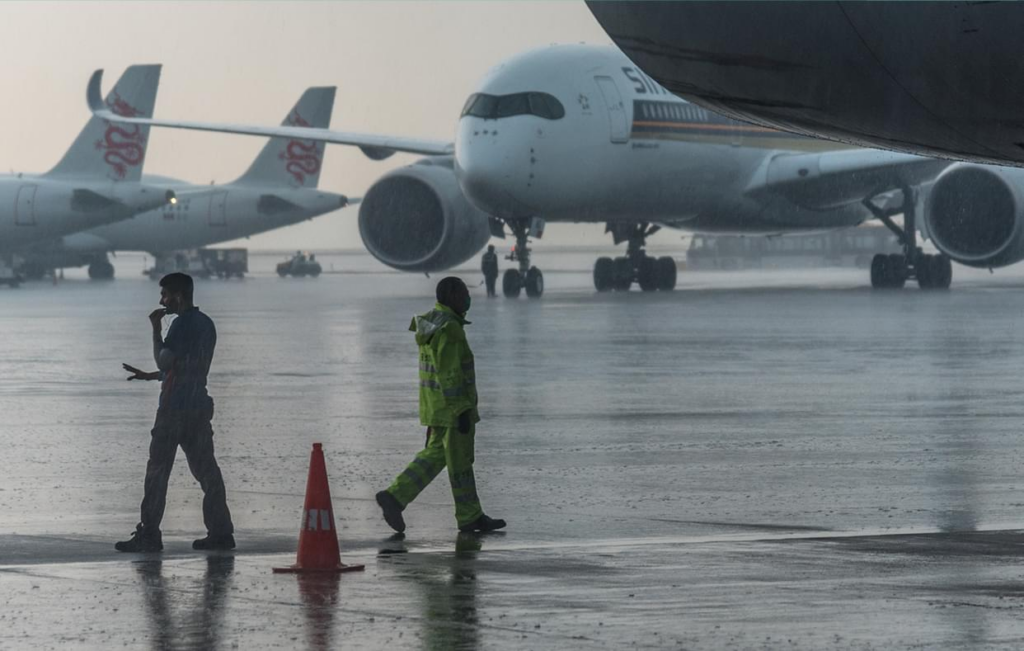
The Problem
One of the problems with the HK Airport is that it is situated in the tropical hotzone of Hong Kong. Therefore there will be occasional rainstorms and thunder. These severe weather events can create significant disruptions to flight schedules, causing delays, diversions, and cancellations that impact thousands of passengers daily. Traditional weather forecasting methods often lack the precision needed to predict these localized weather patterns with sufficient lead time, especially in a geographically complex area like Hong Kong where mountains, urban heat islands, and sea breezes create microclimates that change rapidly.
Within the last few years, HK airport has been readily upgrading their infrastructure in order to reduce the amount of traffic that they receive and be able to reduce delays more than ever. However, even with these improvements, weather-related disruptions continue to pose a significant challenge, with economic impacts estimated at millions of dollars annually in operational costs and passenger inconvenience.
Current Solution

The current approach to weather forecasting at Hong Kong International Airport relies primarily on regional meteorological data from the Hong Kong Observatory, supplemented by satellite imagery and radar systems. While these tools provide a broad picture of approaching weather systems, they often fail to capture the microclimate variations that can affect specific runways or approach paths. The existing system typically provides forecasts with a 6-12 hour window and accuracy rates that diminish significantly for predictions beyond 3 hours.
Airport operations teams must make critical decisions based on this limited information, often resulting in conservative approaches that lead to preventative delays even when adverse weather ultimately doesn’t materialize at the exact location of the airport. This cautious stance, while necessary for safety, creates inefficiencies that ripple throughout the global air traffic network.
Our Solution

Terralogic has developed an innovative solution that combines AI with short-range weather stations and sensors strategically placed throughout the airport complex and surrounding areas. Our system integrates data from over 200 IoT-enabled micro-weather stations that monitor temperature, humidity, air pressure, wind speed and direction, and precipitation at ground level. These stations are complemented by specialized sensors that detect lightning activity and air turbulence.
Our proprietary machine learning algorithms analyze this high-density sensor data alongside traditional meteorological information, historical weather patterns, and topographical features specific to Hong Kong. The AI system continuously learns from actual outcomes, improving its predictive capabilities with each weather event. Most importantly, the system provides hyperlocal forecasts for specific airport zones with unprecedented granularity, including runway-specific conditions and approach path turbulence predictions.
The Terralogic platform delivers real-time updates and forecasts through an intuitive dashboard accessible to air traffic controllers, airline operations centers, and ground handling teams. The system also generates automated alerts when developing weather conditions may impact specific flight operations, with customizable thresholds for different aircraft types and operational requirements.
Outcome

Since implementing the Terralogic weather prediction system, Hong Kong International Airport has experienced remarkable improvements in operational efficiency and safety. Weather-related delays have decreased by 37% in the first year of operation, as airlines and air traffic controllers can now make more informed decisions based on highly accurate, location-specific forecasts.
The system’s ability to predict microclimate conditions has been particularly valuable during the summer monsoon season, when isolated thunderstorms and wind shear events are common. Flight diversions due to unexpected weather conditions have decreased by 42%, resulting in significant fuel savings for airlines and reduced passenger disruption.
The economic impact has been substantial, with estimated savings of $15.3 million in operational costs in the first year alone. Passenger satisfaction scores related to on-time performance have increased by 18%, strengthening Hong Kong’s reputation as a premier international hub.
Beyond the immediate operational benefits, the data collected by the Terralogic system is contributing to improved understanding of climate patterns in the Pearl River Delta region, supporting long-term infrastructure planning and climate resilience strategies for the airport.
As weather patterns become increasingly volatile due to climate change, Hong Kong International Airport now stands at the forefront of weather-resilient aviation operations, setting a new standard for airports worldwide in leveraging AI and hyperlocal sensing technologies to overcome environmental challenges.

